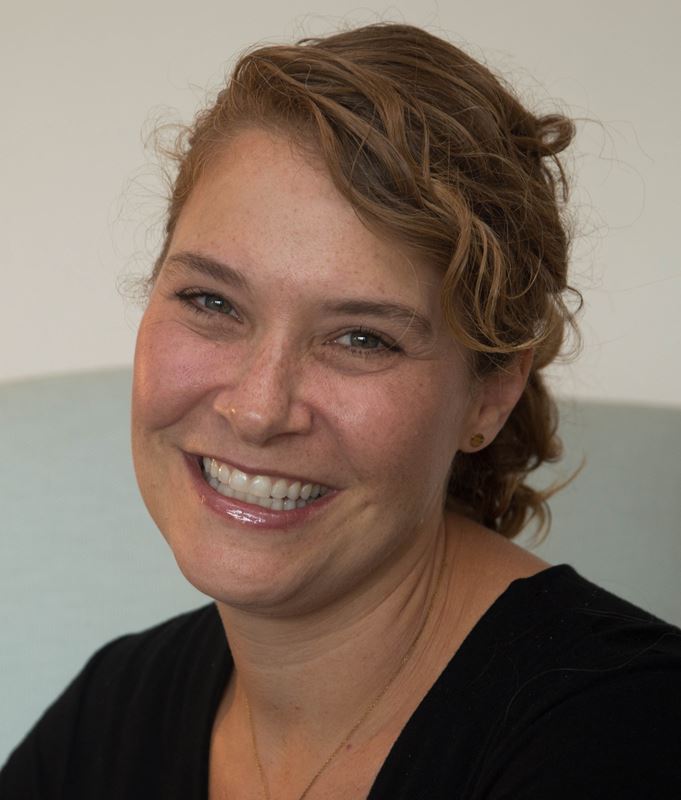29
Oct 2019
Where’s my Balcony?
For me, 2019 is a year of pressing adaptive challenges: global, professional and personal. What’s the most important thing for me to do to counteract the effects of climate change? How do I exercise leadership in an environment where crimes against women and girls hit close to home? What is my authentic response to my and my family’s experience with aging?
As adaptive challenges, these situations can’t be solved only by experts and tested procedures; instead, they must be addressed through changes in the priorities, beliefs and commitments of real people. Including me.
As it was for many in my Wexner Graduate Fellowship generation, my introduction to adaptive leadership came from Ron Heifetz, our class’s faculty member at our first Winter Institute back in 1994. While I’m sure that we covered lots of other terrain, the two concepts that stuck were “getting on the balcony” and “leading with and without authority.” In fact, when I pulled Heifetz’s 1994 book Leadership Without Easy Answers off my shelf, the bookmark was literally stuck to the page with the heading, “Getting on the balcony.”
Exercising adaptive leadership, we were taught, requires that we move intentionally from the dance floor, where the swirl of activity obscures patterns and dynamics that are shaping the current situation, to the balcony, where we can grasp the bigger picture and see the patterns of participation, avoidance and activity that will ultimately be the data that informs our leadership work. To be effective as leaders, we have to be able to both participate and observe.
Recently, I’ve been thinking about how getting to the balcony just to observe others isn’t enough. When I go up to the balcony, my view is still limited to those I can see on the dance floor. If my gaze falls only on the other people as they dance and swirl and get caught up in the moment, I am missing something important: my own self. Where is the balcony that helps me see myself as objectively as I observe others? To really meet the challenges I face, I need to construct my own sort of “balcony above the balcony” to observe, challenge and provoke myself.
The framework of leadership that I’ve found helpful in my efforts to construct my own personal balcony was developed by Robert Anderson and his co-author William Adams. You can read about their framework – what they call “the unified model of leadership development” – in their books, Mastering Leadership and Scaling Leadership, and if you’re interested, you can learn about how it’s used in leadership development through 360 assessments at The Leadership Circle. One thing I love about their framework is how comprehensively it builds upon, credits and adds to the most robust and well-theorized leadership frameworks of the past, including frameworks that we have learned in Wexner curricula such as Heifetz’s adaptive leadership and Kegan and Lahey’s Immunity to Change.
Anderson and Adams’s work is meant to help leaders address the gap between the complexity of the challenges we face in today’s world and the level of complexity of our own minds. Since we can’t decrease the complexity of the challenges or our organizations, we have to increase the complexity of our minds. And the best way to do that? By making our own thoughts the object of our inquiry. In other words, getting to our own personal balcony.
From our adaptive leadership learning, we know that work avoidance and granting too much power to those in authority are two tendencies that prevent us from solving adaptive challenges. To exercise adaptive leadership, we were taught to name those tendencies and take actions that counteract them. I know that I don’t always do that. Anderson and Adams’s work helped me understand why I might not, what beliefs and assumptions I’m carrying around that sometimes hold me back and what to look for in my own thoughts and behaviors to notice when this is happening.
Am I trying to please? If so, I am unlikely to be willing to orchestrate the conflict necessary to move beyond technical solutions. Am I trying to control? When I do this, I may be unable to give the work back to the people it affects most. Am I separating myself from the people and the problem through arrogance or frustration? If so, I’m not going to be a great holding container for the distress in the environment.
Getting on the balcony is a personal act of adaptive leadership. The balcony is not only useful and necessary for understanding dynamics in the system and among other people separate from us, but constructing and climbing our own personal balcony helps us understand how we – each of us as individuals – tend to react when faced with an adaptive challenge. Knowing what to do to exercise adaptive leadership was the gift of my Wexner fellowship. Building in myself the ability and commitment to do so is my life’s ongoing work.
References:
Anderson, Robert A. and William A. Adams. Mastering Leadership: An Integrated Framework For Breakthrough Performance and Extraordinary Business Results. Hoboken, NJ: Wiley, 2016.
Heifetz, Ronald A. Leadership Without Easy Answers. Cambridge, MA: Harvard University Press, 1994.
Kegan, Robert and Lisa Laskow Lahey. Immunity to Change: How to Overcome It and Unlock the Potential in Yourselves and Your Organization, Boston, MA: Harvard Business Review Press, 2009.


Photo by S Alb on Unsplash.
Get To Know The Author
Wexner Graduate Fellow Alum Michelle Lynn-Sachs (Class 6) founded Spotlight Consulting and Coaching to help congregations and other faith-based organizations shine through customized leadership development, coaching and strategic consulting. Michelle has worked at the intersection of congregations, organizational change, education and leadership for more than 20 years. Michelle is a proud alumna of Brown University (AB), the Rhea Hirsch School of Education at HUC-JIR (MAJE) and New York University (PhD). She completed the coach training program at the Coaches Training Institute.

